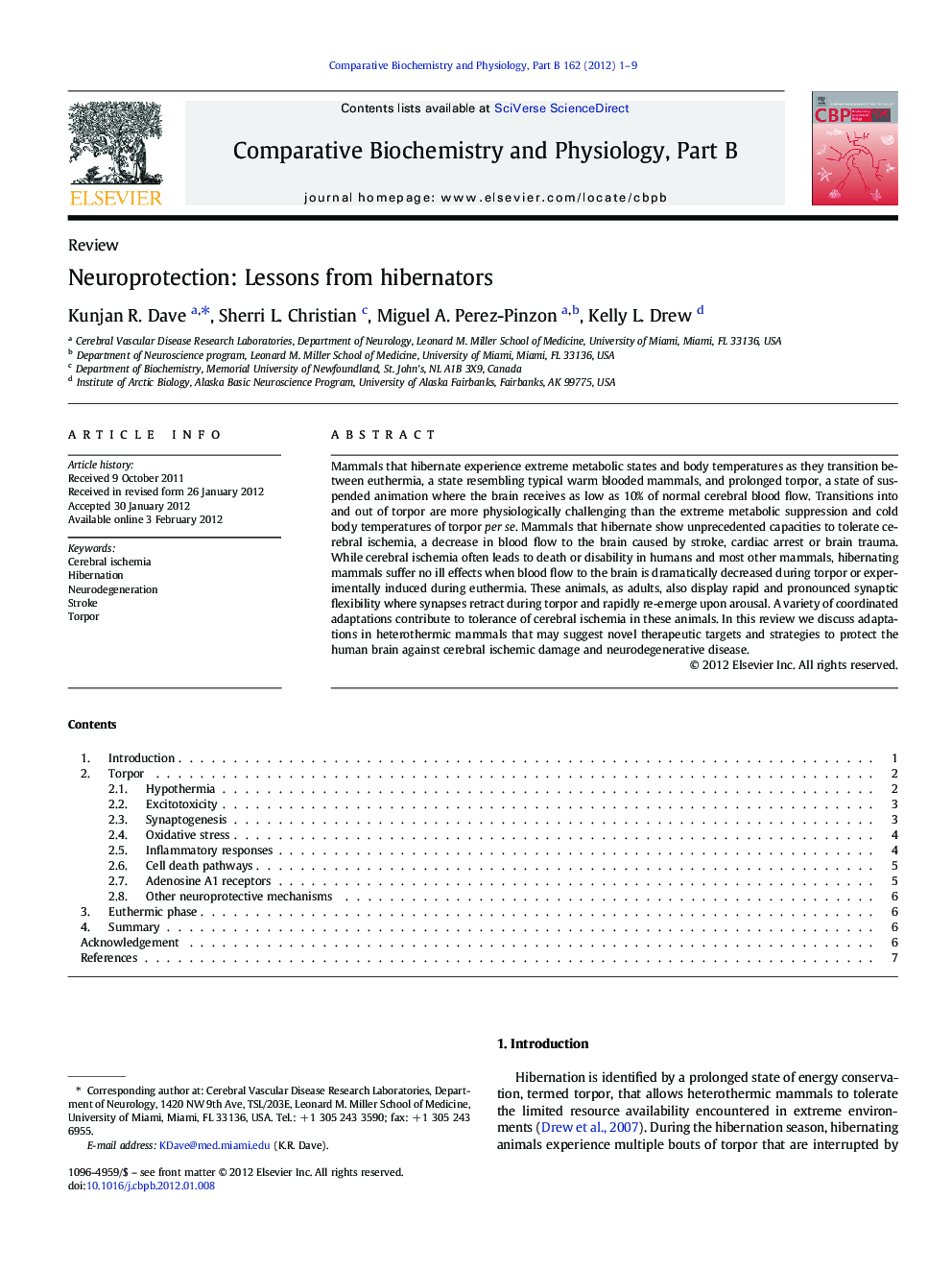| کد مقاله | کد نشریه | سال انتشار | مقاله انگلیسی | نسخه تمام متن |
|---|---|---|---|---|
| 1975550 | 1539166 | 2012 | 9 صفحه PDF | دانلود رایگان |

Mammals that hibernate experience extreme metabolic states and body temperatures as they transition between euthermia, a state resembling typical warm blooded mammals, and prolonged torpor, a state of suspended animation where the brain receives as low as 10% of normal cerebral blood flow. Transitions into and out of torpor are more physiologically challenging than the extreme metabolic suppression and cold body temperatures of torpor per se. Mammals that hibernate show unprecedented capacities to tolerate cerebral ischemia, a decrease in blood flow to the brain caused by stroke, cardiac arrest or brain trauma. While cerebral ischemia often leads to death or disability in humans and most other mammals, hibernating mammals suffer no ill effects when blood flow to the brain is dramatically decreased during torpor or experimentally induced during euthermia. These animals, as adults, also display rapid and pronounced synaptic flexibility where synapses retract during torpor and rapidly re-emerge upon arousal. A variety of coordinated adaptations contribute to tolerance of cerebral ischemia in these animals. In this review we discuss adaptations in heterothermic mammals that may suggest novel therapeutic targets and strategies to protect the human brain against cerebral ischemic damage and neurodegenerative disease.
Journal: Comparative Biochemistry and Physiology Part B: Biochemistry and Molecular Biology - Volume 162, Issues 1–3, May 2012, Pages 1–9